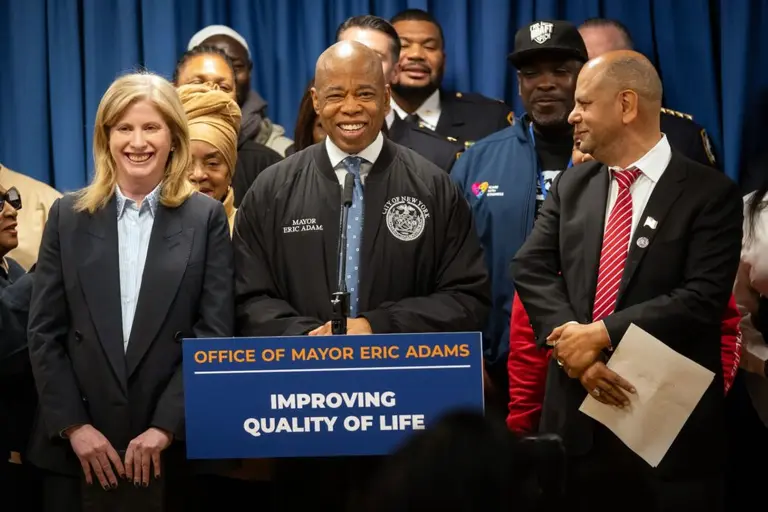Rent stabilized apartments will see increases of 1.5 and 2.5 percent this year

Photo courtesy of the MET Council on Housing
Last night the Rent Guidelines Board approved rent hikes for tenants in rent-stablized buildings, making this the second year rents for such units have increased. This latest vote by the board allows landlords to charge their rent-stabilized tenants increases of up to 1.5 percent for one-year leases and 2.5 percent for two-year leases. As the New York Times points out today, “the increases were seen as modest given the history of the nine-member board.” Still, these are the steepest permitted increases since 2013 — news met with jeers from housing advocates at a public hearing held at Cooper Union.
At the public hearing, housing advocates and stabilized tenants spoke to the need for a rent freeze. It’s something that’s been voted for in the past, though last year the board voted for increases of 1.25 percent for one-year leases and 2 percent on two-year leases.
A report by the rent board found that the cost of operating and maintaining rent-stabilized buildings had risen by 4.5 percent this year, spurred by a 16.4 percent increase in fuel costs. And yet another report, released earlier this year, found that net revenue for landlords of rent-stabilized buildings had risen for 12 years in a row, including by 4.4 percent in 2016.
As you might guess, the issue causes landlord groups and tenant organizers to face off, with landlords pushing for higher rent allowances and housing advocates fighting for an extended rent freeze. One organization, the Rent Justice Coalition, believes landlords “overcompensated for decades” while more than 30 percent of rent-stabilized tenants paid 50 percent or more of their income for rent. The group also points out that some landlords have been caught ousting rent-stabilized tenants illegally, and charging market rates for apartments that should be regulated.
These latest increases go into effect for the city’s roughly one million rent-stabilized tenants who renew leases after October 1st of this year.
Rent stabilization applies to you if you live in a building built before 1974 with six or more units. There were 966,000 rent-stabilized apartments across New York in 2017, comprising of 44 percent of the city’s rental stock. And while there was a gain of nearly 4,400 rent-stabilized units in 2017 (mostly because of tax incentives), the city’s rent-stabilized housing stock has seen a significant loss of 147,500 units since 1994.
[Via the New York Times]
RELATED:


























